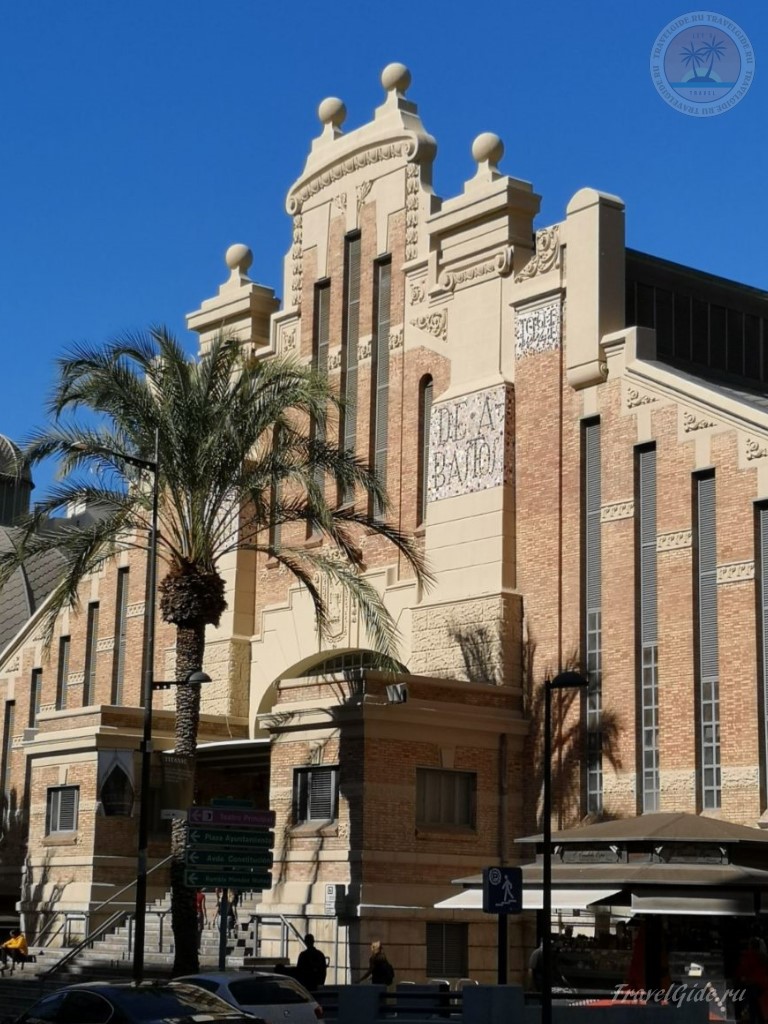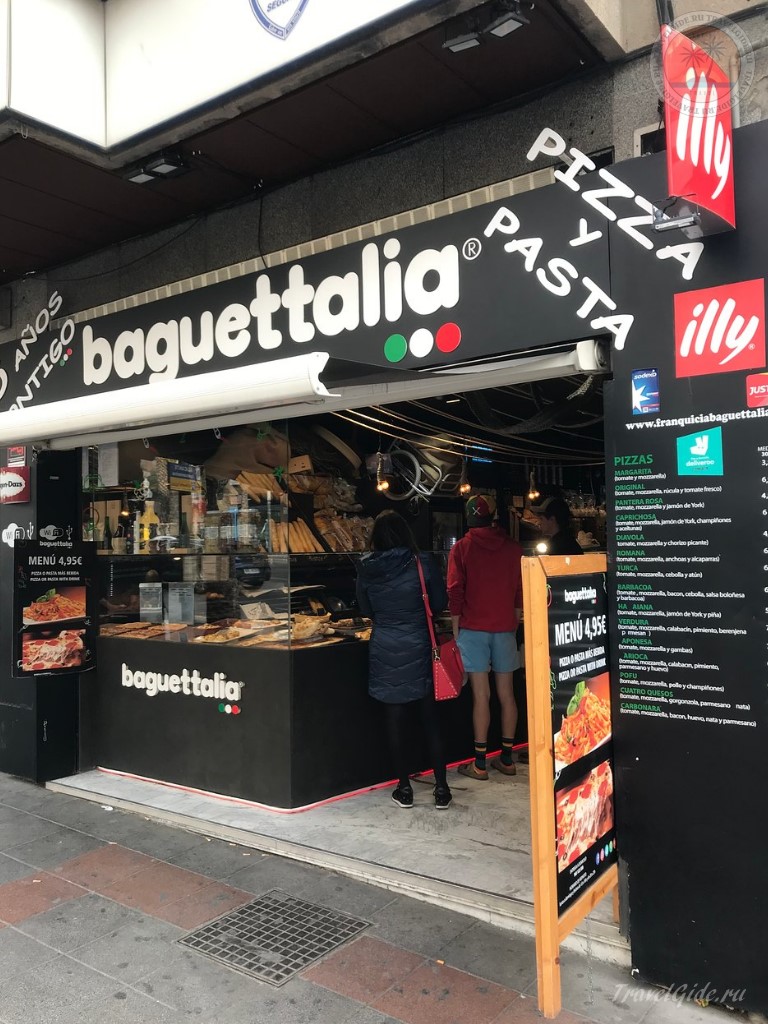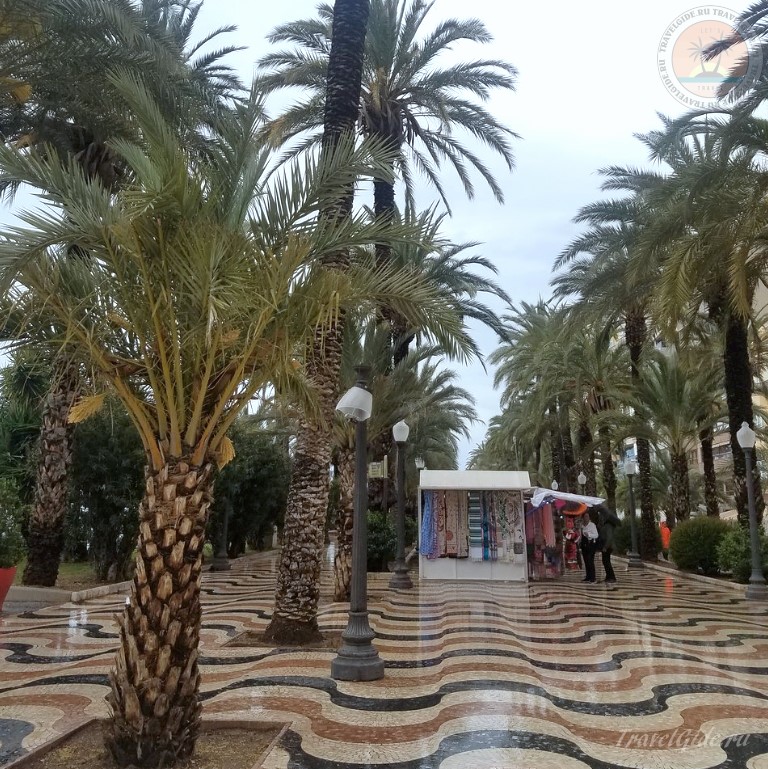
Alicante guide: everything you need to know before your trip
ANDLicante is the largest city and capital of the province of the same name, which is part of the autonomous community of Valencia. What annually attracts hundreds of thousands of tourists from all over the world is, of course, a vacation on the Costa Blanca, in the center of which it is located. Check out the full information about the city, which will be useful to every tourist or traveler when visiting it.
Basic information about the city of Alicante
The province of Alicante and the Costa Blanca are considered the most popular tourist destinations in Spain. It is in Alicante and its environs that prestigious and beloved Mediterranean resorts with excellent infrastructure and a comfortable climate are located.

LANGUAGES:
The official language in the city is Spanish, but many of the natives speak its Valencian dialect, which is a variation of the Catalan language. Also, most of the townspeople speak English quite well, mainly due to the large number of tourists from all over the world.
CURRENCY:
In restaurants, shops, hotels, it is most profitable to pay with the national currency, and the national currency of Spain after 2002 is the euro. It is best to exchange money at the bank, but hurry up to do it in the morning, as they are closed in the afternoon. Some banks may charge up to 10%. Exchange offices are open until late in the evening, but they charge large commission fees. However, it is allowed to import amounts up to 10 thousand Euros without declaring.
CLIMATE:
Like most of the cities on the Mediterranean coast, Alicante has a mild climate, with frequent rainfall in spring and autumn. Sharp temperature drops here are extremely rare, so summers in this area are quite hot (from 20.4ºС to 30.6ºС), and winters are warm (from 6.2 ºС to 16.8 ºС).
ATTRACTIONS:
- Castillo de Santa Barbara.
- Esplanade boulevard.
- Basilica of Santa Maria.
- Castle of San Fernando.
- Cathedral of Saint Nicholas.
- Tabarka Island.
- Elch Gate Square.
- Santa Cruz quarter.
- Municipal Square.
- Museum of the twentieth century "La Segurada".
RESORT AND TOURISM:
Alicante is a popular stop for Polish tourists exploring the Mediterranean regions of the Spanish Levant. The main factor contributing to this is the proximity of the airport, which receives regular flights from all over the world. In this place, elements of Romanesque, Greek and Moorish culture are very closely intertwined, complemented in a peculiar way by the architecture of the Gothic style, Art Nouveau, Baroque and many others.
History of the city of Alicante
For those to whom history seems boring and of little use, this section of the article can be skipped. However, spend a minute of your precious time and your trip to Alicante will become more interesting and eventful.
And so, the first tribes of hunters settled in Alicante, who came to the southern coast of modern Spain from the center of Europe, somewhere between the third and fifth millennium BC.
After a while, about 1000 years before the birth of Christ, the Phoenicians and Greeks began to occupy the eastern coast of Spain, laying the foundations of small trading ports, introducing and promoting their literacy, as well as iron processing and ceramics manufacturing methods, among the Iberian tribe who then lived in this territory. .

In the VI century BC. e., the armies of the Romans and Carthaginians began to compete for the territory of the Iberian Peninsula. In this regard, the general of Carthage, Hamilcar Barca, founded here the fortified settlement of Akra Levka, which means "white mountain". This is where the current "pearl" of Spain - Alicante - stands.
Despite the fact that the Carthaginian army conquered many territories in the vicinity of Alicante, the Romans also dominated this territory for more than 700 years. In the 5th century BC. The Roman Empire was crumbling, and their city of Lucentum, the predecessor of Alicante, fell under the rule of the Visigoths.
However, neither the Visigoths nor the Romans were able to defend this area from the attack of slave invaders. The Moors nicknamed the city "Alicante", which means "city of lights".

Their dominance lasted until the 11th century, until in 1246 the territory of the city was finally conquered by King Alfonso X. But soon Alicante became part of the possessions of King James II of Aragon. After some time, this place becomes the main trading point in the Mediterranean, exporting wine, olive oil, rice, oranges and wool.
In the 17th century, King Philip III expelled all the "Moors" remaining in this territory from Valencia. Due to the fact that among the expelled there were a huge number of rural workers and artisans, Valencia, and together with Alicante, were on the verge of ruin.

Things went from bad to worse after the Spanish War of Succession in the early 18th century. Then the times of stagnation began in Alicante. For the next two centuries, the town survived by growing almonds and oranges, as well as fishing and shoe making.
XIX century - the beginning of a sharp rise in trade relations and the growth of the city bay. At the beginning of the last century, Alicante was considered the second capital of Spain, and during the First World War, he was given the opportunity to develop local industry and agriculture.
In the second half of the twentieth century, tremendous changes took place here, due to the development of resort areas and tourism. At the same time, huge buildings, tourist complexes, various bars, cafes and restaurants were erected.
The main attractions of Alicante: where to go, what to see and where to have fun
Today, this city remains one of the most important centers of export and fishing. Well, holidays in Alicante annually attract hundreds of thousands of travelers, thanks to its wonderful climate, geographical location, eventful history, magnificent architectural and cultural monuments.
Castle of San Fernando - Castillo de San Fernando
It is best to start the tour from the observation platforms, which offer a beautiful panorama of the city. To begin with, it is worth visiting the surroundings of the castle of St. Fernando or Ferdinand (Castillo de San Fernando), as you like.

Little is left of the castle itself, but the fortifications and dungeons are well preserved here. It is a pity that the city does not pay more attention to this place. It seems a bit abandoned in terms of tourism and has potential. But the graffiti on the dilapidated walls spoil the whole impression.

Castillo de San Fernando was built during the War of Independence in 1808-1814. Here you can hardly appreciate the work of the architects of those times, but you can see the amazing beauty of the landscapes of the embankment and the whole city.

Basilica of Santa Maria
Continue your sightseeing tour of Alicante with a tour of the most important sacred building in the area. The Gothic church of the Basilica of St. Mary is a beautiful temple built on the ruins of an ancient mosque.

The history of this building dates back to the thirteenth century, but its current appearance is the result of reconstruction carried out after a fire in the fifteenth century.

This basilica also boasts a younger baroque façade, as well as a beautiful portal with an interesting depiction of the Virgin Mary. The church was originally built in the Gothic style. In the 18th century, the side nave was completed, and the facade was remodeled in the Baroque style.
Castle of Saint Barbara - Castillo de Santa Barbara
Very close to the temple of Santa Maria is the main value of Alicante - the castle of St. Barbara or, as it is also called, the castle of Santa Barbara. It rises on the rock of Benacantil, at an altitude of more than 165 meters above sea level.

This today's historical landmark was previously the most important strategic defensive point during the hours of hostilities and was constantly subjected to the most severe enemy onslaught.

Nowadays, having risen to the palace, you can see a stunning view from above not only on Alicante, but even on other nearby cities. Now a very interesting historical museum operates in the castle itself.

Like most castles, Castillo de Santa Barbara has its own sad legend. The legend tells about the fate of unfortunate lovers, Princess Kantara and Prince Ali.
Historic market of Alicante - Mercado Central de Alicante
Alicante also boasts an interesting historical market, the Mercado Central de Alicante. You will find plenty of local fresh fruits and vegetables, local meats and fish. The monumental structure, reached by a high staircase, is located on Avenida Alfonso El Sabio.

As you walk through the market, you can tell the difference between the perfect, colorful stalls and shops on the main aisles, which cater mostly to tourists, and the less representative establishments at the back of the building, where locals shop for themselves on a regular basis.
You can also sit here and order great coffee. But you can do the same in a cafe in a small square located at one of the two main entrances to the market. There you should definitely try local snacks simply or with a glass of beer tapas or pintxos.

Not far from Mercado Central de Alicante there is a cozy "restaurant" or cafe called Baguettaliawhere you can taste good food. Although this applies mostly to Italian cuisine, you will surely enjoy it.

Be sure to try the local pastas in different versions. By the way, they are relatively inexpensive. For a portion you will pay something around 4-5 euros. Also, all visitors note the excellent pastries in this restaurant.
Well, next to Baguettalia there is a well-stocked budget grocery store "Supercor Express" in case you need to buy something for later.
City Park El Palmeral - Parc El Palmerar
Having a great meal, it’s not bad to relax in some pleasant, calm place. It is in such a place, called El Palmeral Park, that you should go. This is one of the most beautiful parks that you probably have not seen not only in Spain, but also in other countries. It is located on the outskirts of the city.

There is a pleasant bonus in visiting this park. In Alicante, visiting such places is usually offered for a fee. But in this case, things are different. The easiest way to get to this city park is by bus.

If you read the name of the park, you will understand that we are talking about a palm park. Another plus is that even in early November, the park will delight you with summer greenery and natural freshness. And yet, as a rule, there are very few visitors to El Palmeral, so it’s definitely worth visiting there.

Esplanade Boulevard - Passeig Esplanada D'espanya
One of the notable attractions of Alicante is the Esplanade Boulevard on the waterfront. Explanada de España is the symbol of the city and one of the most popular boulevards in Spain.

Palm trees will surround you all the way along the promenade. There are people all around, moving slowly along the miniature tiles of the Explanada de España. I wonder how long it takes to count the exact number of mosaic tiles that pave the boulevard on the embankment? According to official information, it is known that there are more than 6.5 million of them.
In 1957, the boulevard, which runs parallel to the harbor area, was tiled in red, black, and white. It is known from history that the boulevard was built on the site of the former medieval wall, which for centuries protected Alicante from pirate attacks.

The wall itself was demolished in 1830, when reconstruction was carried out in the port part of the city. Then the port had additional free space. It turned out to be ideal for creating a place of recreation for residents.
Nowadays, finding a real pirate in the Esplanade de España is quite problematic. But the boulevard is loved by locals and tourists who are not averse to sitting in one of the many cafes or getting acquainted with the contents of the stalls and shopping pavilions located on the boulevard. Those who decide what to bring from spain as a keepsake, go here for handmade souvenirs.
Tabarka Island
An important value of Alicante is deservedly considered a small island of Tabarka, located 11 miles from the city. It has its own fortress wall. Coastal waters and the entire territory are declared a reserve, thanks to the crystal clearness and exclusivity of flora and fauna.

It is a picturesque town with charming white houses and a historic old church. Getting there is easy, as boats leave for the island from the port of Alicante every day. Already such a sea trip on a boat becomes an exciting adventure.

There is a restaurant and a shop on the island of Tabarka. However, it is better to bring everything you need with you, because the prices on the island are much higher than the prices in the city. The island has a beach and a small coastal path that you can just walk along until you find the perfect place to relax.
Video story about the Spanish city of Alicante
The story about this real pearl of Spain will be incomplete if you do not add to it a short video about the city, its sights, which are much more than those mentioned in the article in the article, as well as its amazing views and landscapes.
Alicante. Today, this resort is so popular among tourists from all over the world due to its hospitality and the variety of places where you can spend your holidays, while getting the most positive. Having once visited this paradise of our planet, there is no doubt that you will want to do it again, as the sea of unforgettable emotions and impressions will live in your memory for a long, long time.









